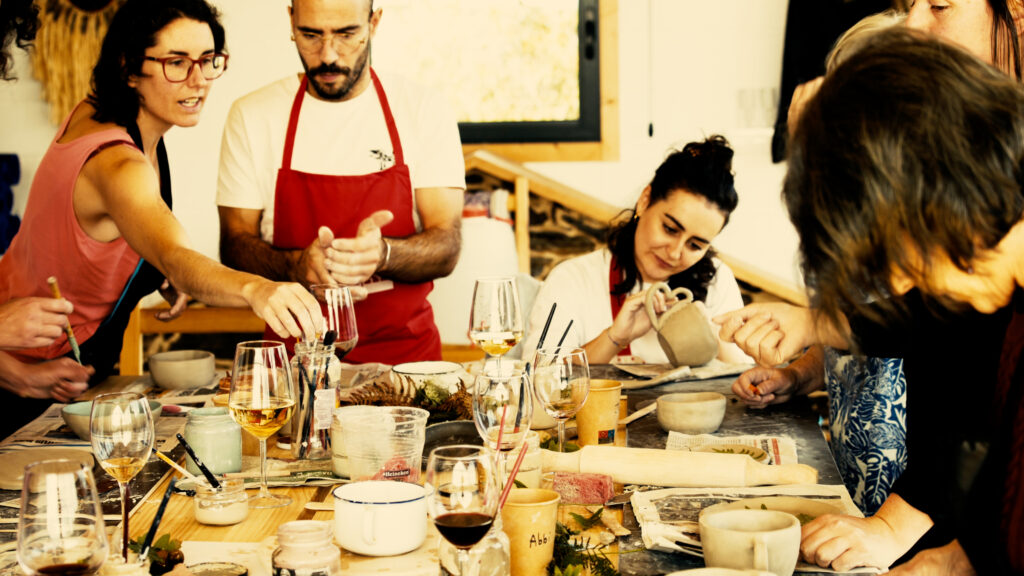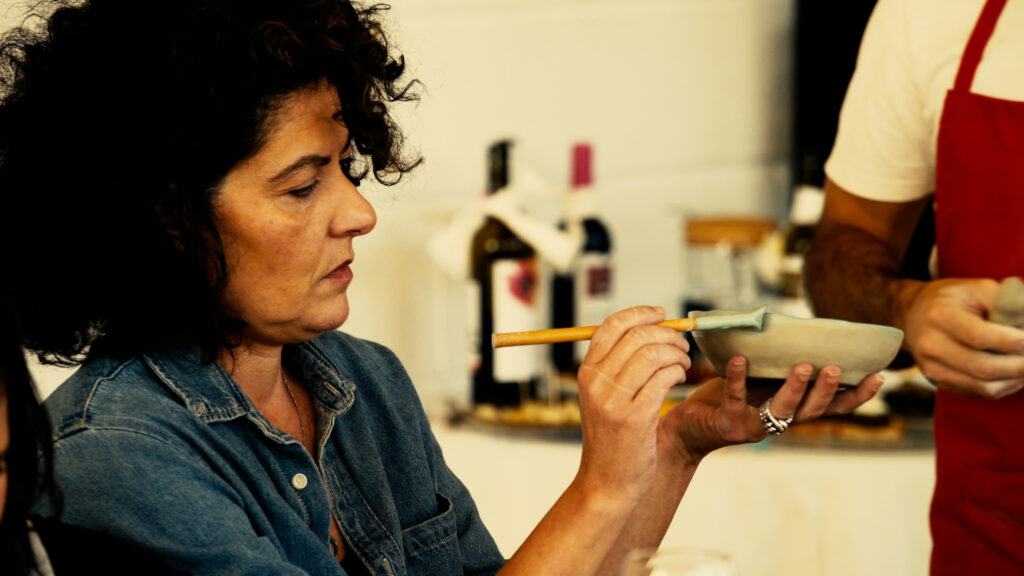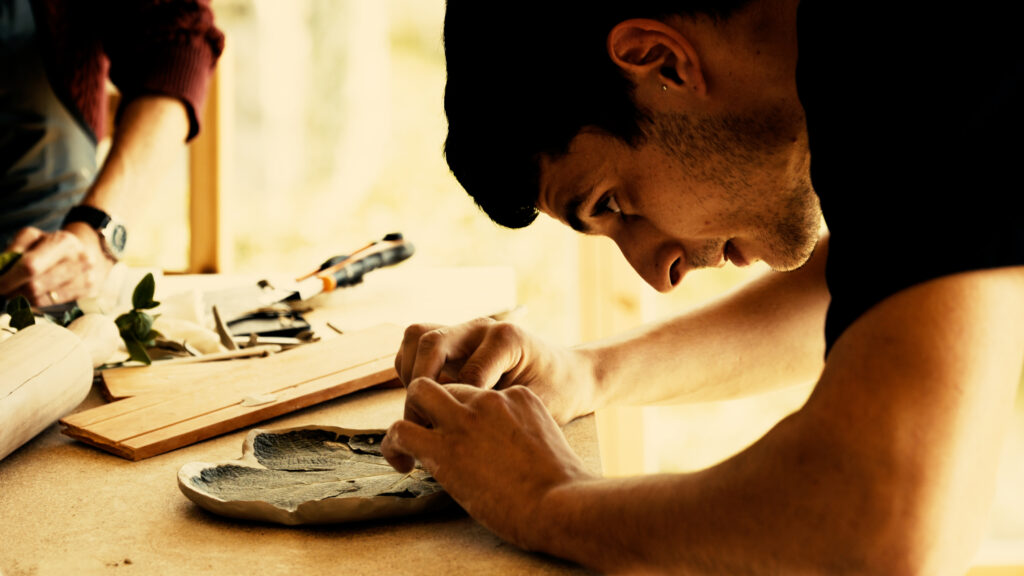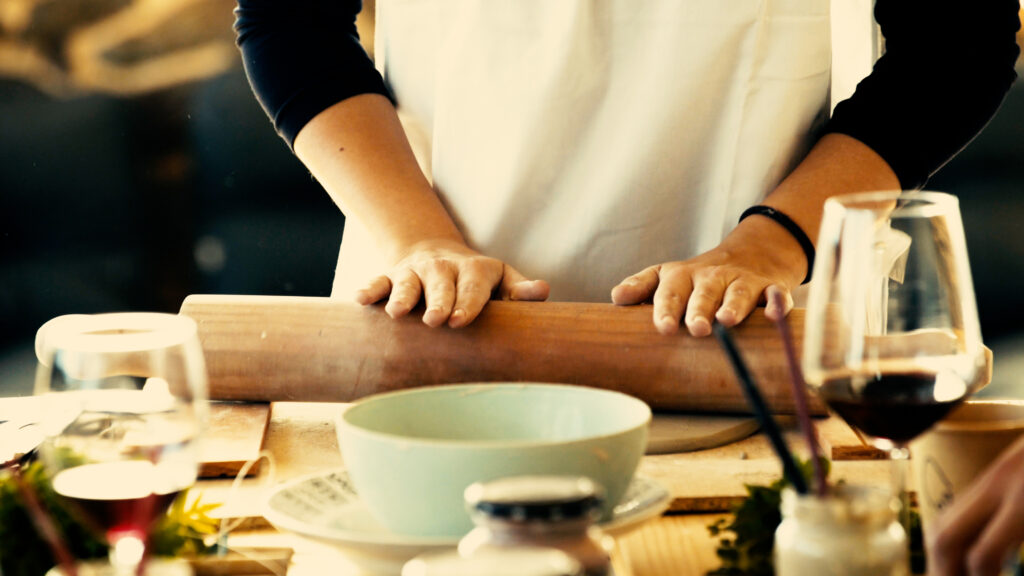
The “Power of Play” is a fundamental tool in O Castro Art Village’s toolkit
The Power of Play at O Castro Art Village
At O Castro Art Village, the transformative power of play is embraced. More than just a simple activity, play is regarded as a fundamental human experience that allows for self-expression, connection with others, and exploration of new possibilities. The work here is deeply inspired by the theories of Donald Winnicott, who saw play as essential to psychological health and creative living.
Winnicott’s Theory of Play and Creativity
Winnicott, a British psychoanalyst and pediatrician, famously stated that “it is in playing and only in playing that the individual child or adult is able to be creative and to use the whole personality.” He argued that play exists in a “potential space”—a transitional area between inner reality and external life—where true creativity and self-expression flourish.
At O Castro Art Village, such a space is provided, a “kindergarten for grownups” where adults are encouraged to rediscover their innate creativity through artistic expression. Winnicott’s ideas are deeply connected to the broader field of expressive arts, which sees creativity as a pathway to personal transformation and emotional well-being.

The True Self and Play as Liberation
His concept of the “true self” suggests that individuals can only be fully authentic when they are engaged in spontaneous, creative activities. In contrast, the “false self” emerges when people conform to external expectations at the expense of their inner impulses. Play, therefore, is not just leisure—it is a means of reclaiming one’s true self, an act of personal liberation.
The Expressive Arts Perspective: Levine and Knill
This perspective is echoed by Stephen K. Levine, who argues that “expressive arts therapy is not about analyzing or interpreting but about experiencing,” emphasizing the process over the final product. Paolo Knill expands on this by introducing the idea of “intermodal play,” the ability to shift between different artistic modalities—such as movement, sound, and visual art—to deepen one’s engagement with creativity. These intermodal transitions allow individuals to bypass intellectual barriers and access more intuitive and embodied forms of expression.
An approach is taken at O Castro Art Village that aligns with these ideas, fostering an environment where art is not seen as a rigid discipline but as a fluid, exploratory process.

Artistic Activities: Exploring Creativity Through Play
Artistic activities are designed to encourage this kind of playful engagement. Whether through visual arts, dance, theater, music, collage, photography, filmmaking, or other creative disciplines, an environment is fostered where participants can engage in free, spontaneous artistic play.
Workshops such as Improvisational theatre, Abstract painting, Movement therapy, or Multimedia storytelling are offered to help individuals break out of rigid patterns and reconnect with their authentic selves.
Creating a Safe Space for Creative Play
The significance of a safe and nurturing environment for creative play is also emphasized. Winnicott’s notion of the “holding environment”—a space where individuals feel psychologically safe and supported—is a guiding principle.
“Psychotherapy takes place in the overlap of two play areas,” Winnicott noted, reinforcing the idea that healing and self-discovery happen in spaces where play is encouraged. Artistic residencies, communal projects, and expressive arts retreats are provided as a safe container, allowing individuals to explore, create, and transform through play.

The Communal Power of Creativity
A belief is held in the communal power of creativity. Art is not just a solitary pursuit—it is an invitation to connect with others. Collaborative projects are facilitated to bring together artists, thinkers, and dreamers to co-create in a spirit of shared imagination.
This echoes Knill’s concept of “aesthetic responsibility”—the idea that artistic creation is a relational act, one that requires engagement, openness, and dialogue. When people create together, they not only produce art but also shape a shared experience, reinforcing the importance of community and connection.
Play as a Radical Act in a Productivity-Driven World
Furthermore, play within artistic expression can be seen as a radical act in a world that often prioritizes productivity over creativity. In a society that encourages efficiency and output, taking time to play—without a fixed goal or purpose—can be an act of reclaiming one’s inner world.
This perspective aligns with Levine’s assertion that “poiesis”—the act of bringing something into being—is fundamental to human existence. By allowing themselves to engage in playful creativity, individuals at O Castro Art Village are not just making art; they are actively shaping their own narratives and experiences.

Join the Creative Journey
By embracing Winnicott’s insights on play and integrating the expressive arts framework developed by Levine and Knill, O Castro Art Village has become a space where creativity thrives, where play is taken seriously, and where art becomes a pathway to personal and collective transformation.
All are invited to join in this journey. The opportunity to play, create, and rediscover the magic of artistic expression is offered in a space designed for imagination and growth—a true “kindergarten for grownups.”
